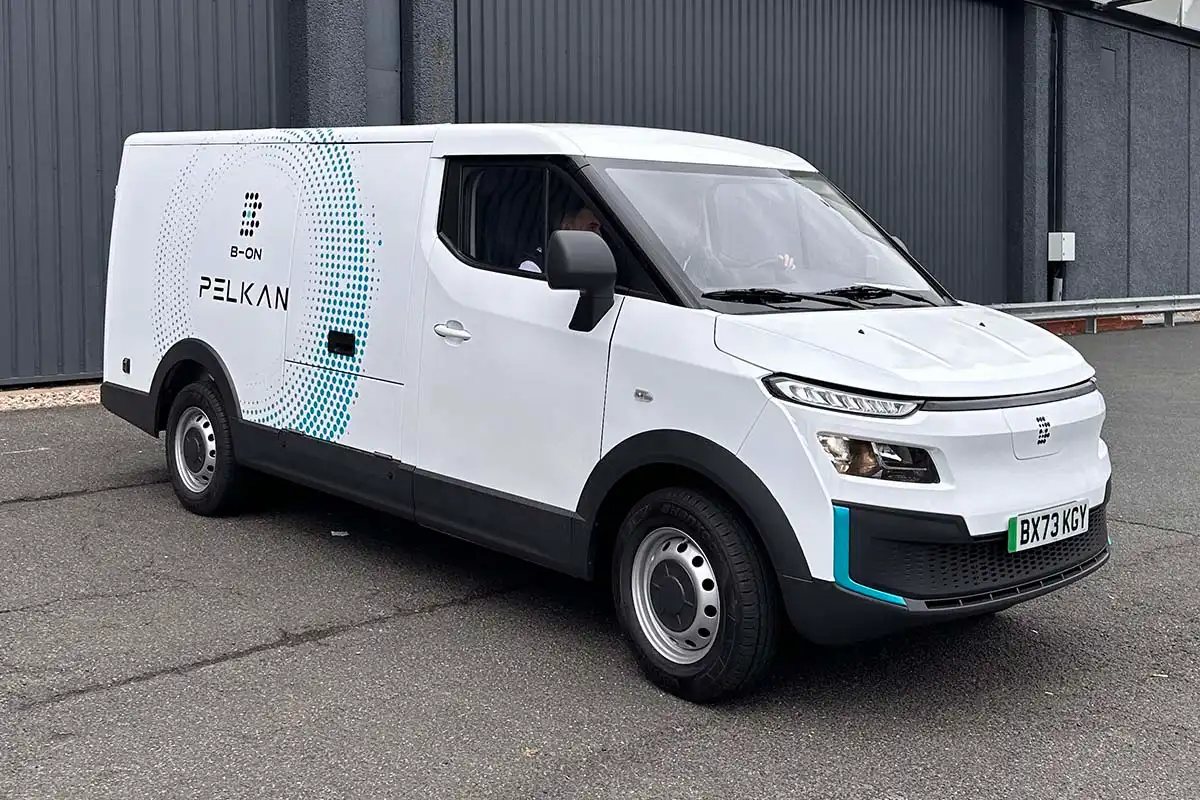
Lightweight, purpose-built and affordable, the B-ON Pelkan defies almost everything we have come to expect of the electric van market at the moment.
This budget entry into the electric van sector hopes to shake up the market when it is launched in 2025 with a range of up to 173 miles and payloads of more than 1.3 tonnes.
The B-ON Pelkan is aimed at the budget end of the electric van market with a starting price of around £30,000, excluding VAT. It comes with a choice of two batteries, 43.5kWh and 53.6kWh, and is powered by a single electric motor with an output of 85kW (114hp).
The B-ON models take their name from the battery sizes, so there is a Pelkan 43 which has a claimed range of up to 226km (140 miles), and then there is a Pelkan 54 with a claimed range of 279km (173 miles).
Those are fairly respectable numbers but other OEMs are already pushing battery sizes into the 70kWh to 80kWh range which by the time it comes to launch could leave the Pelkan looking rather miserly for a van with such a large payload potential.
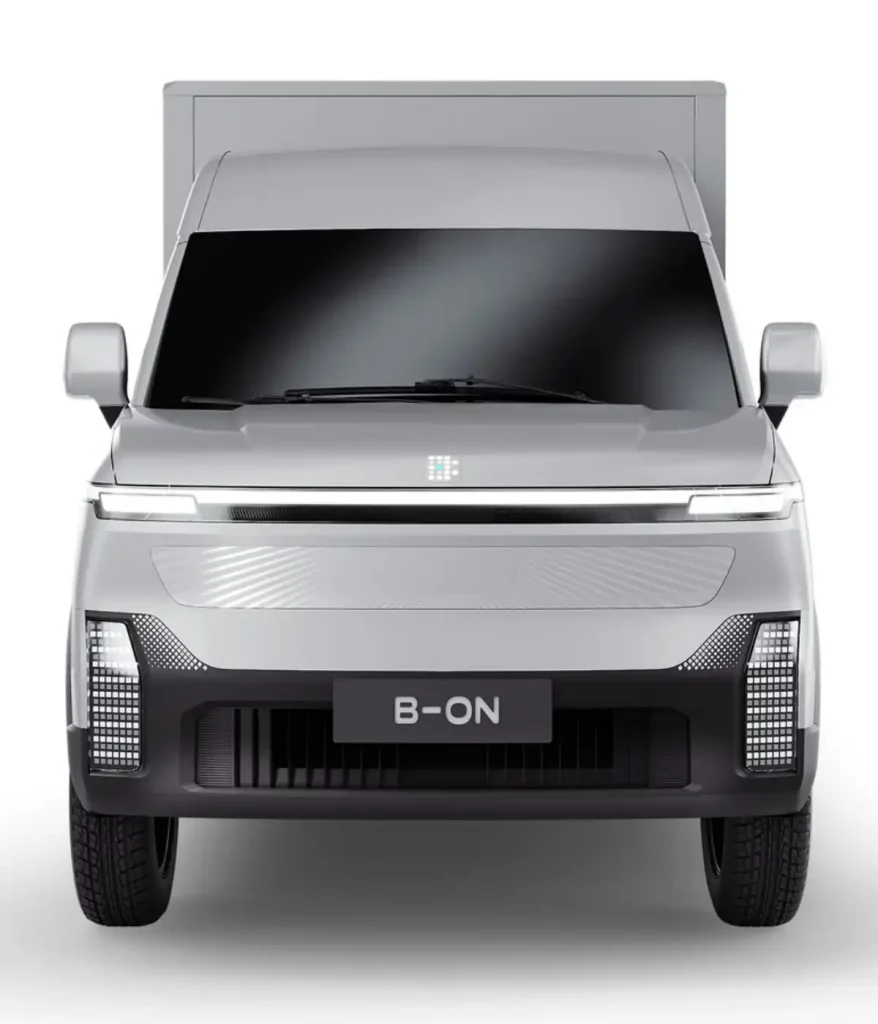
Given the weight of the batteries, payloads are impressive.
B-ON claims the Pelkan 43 will have a payload capacity of 1,350kg while the bigger batteries in the Pelkan 54 only reduce payload to 1,300kg.
The high payloads are thanks to a lightweight aluminium body. A body which is only available in a single size, but with a load volume of 7.1m3.
That’s comparable to the newly launched Maxus eDeliver 5 in volume which has a choice of 6.6m3 or 7.6m3 bodies, but cannot quite muster up the same payload – just 1200kg.
The B-ON Pelkan has a GVW of 3.1-tonnes, putting it in the medium-sized van camp along with best-selling competitors like the Vauxhall Vivaro Electric – a van which is comfortably beats on payload and load volume, as the Vivaro Electric can manage just 1,000kg payload and up to 6.1m3 load space.
Charging speeds are typically rapid, and B-ON says the Pelkan can be fast charged from 30% to 80% in just 35 minutes via a socket located in the centre of the van's grille.
So far, so good. The Pelkan, on paper, has all the attributes needed to be a viable competitor in the EV sector but then it gets weird.
Access to the Pelkan's load box is not through normal means. It’s unconventional to say the least. Yes, there are normal twin rear doors - which also open to 270 degrees – but they’re held in position by flimsy hooks that don’t look tough enough for life on a commercial vehicle.
Then there’s the less useful side shutter door. Rather than a conventional sliding side door, the Pelkan has a hatch that swings up and out from the van. It’s not easy to operate and when open it is at a dangerously low level. At best, it’s going to cause access issues for busy drivers, at it’s worst we’re talking about head injuries. It’s not a great solution when a sliding door works so well already.
A better solution is the Smart Dispenser concept - think of it as an internal chicken rotisserie but for packages, that delivers the relevant parcel via a slot in the side of the van (see below).
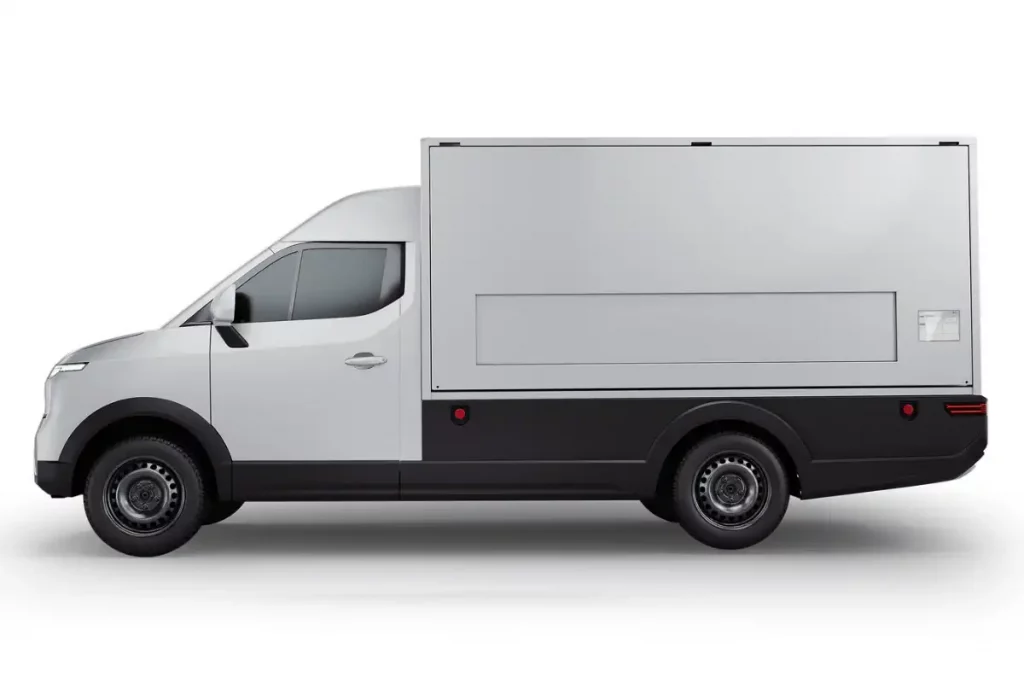
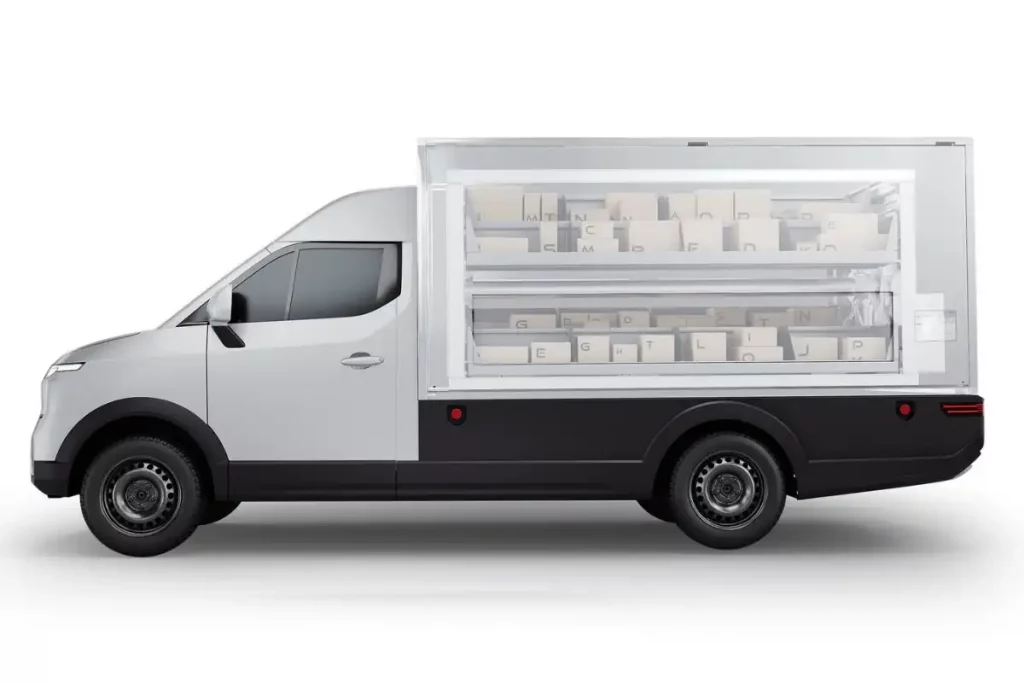
On the road there are also a few issues. The 85kW motor doesn’t deliver the sort of power you’d expect from a single drive, instant torque battery electric van. It feels a bit underpowered for a van of its size and with a full 1,350kg payload it’s going to feel downright slow.
On the plus side it handles fairly well. The steering is a little muted, with little in the way of feedback from a fairly light and overly assisted electrical power steering system. The ride comfort is good though. It feels planted and there’s almost no body roll.
Given the large underbody surface area for the battery weight to be disturbed across, it’s suprising that there’s as much understeer as there is. Without a nose heavy engine, that’s not something you now often find in electric vans.
The material quality of the interior could also do with being improved slightly. It’s ergonomic enough with a circular dial on the dashboard serving up the gear selector with R (reverse), N (neutral) and D (drive) options but the cabin as a whole feels dated. The switchgear is cheap and the plastics are of a low quality and feel.
You also won’t find any choice of regenerative braking modes and you can forget about any clever driving modes to help improve the range. It’s a budget affair, which is to be expected given the £30k price estimate – around £10k less than serious competitors. The driver's seat has a reasonable amount of range adjustment forwards and back but the steering wheel is fixed – a disappointment as that’s a standard feature in all modern vans.
More distressing is the lacks the level of safety and ADAS systems in the Pelkan. It gets mandatory items like daytime running lights and airbags, but the only other helpful systems to write home about are a reversing camera and sensors.
As with all electric vehicles, the B-ON Pelkan gets a connected app. B-ON Connect will help eLCV fleets maximise uptime and minimise operating costs through monitoring driver behaviour and vehicle performance.
B-ON also says its electricity and charge management software, B-ON Energy, will allow fleets to avoid peak charging times and to make use of their own power through establishing electrical energy storage units at their depots, thus avoiding expensive energy tariffs.
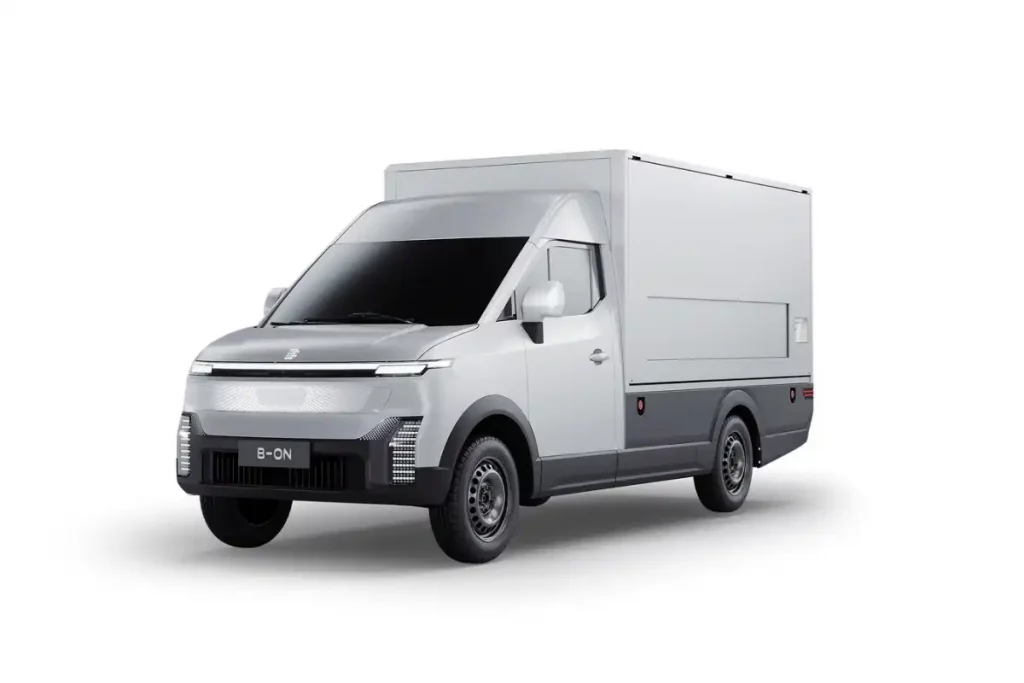
An integrated battery management system will provide performance data to maximise range and the company says the B-ON Deployment Consultancy will be on hand to provide advice to customers making the transition to electric vans. B-ON also says its software is agnostic, allowing its data to be shared with other brands' fleet management systems.
Buyers for the B-ON Pelkan are expected to be in the last-mile delivery business. Here they can make use of fixed routes and a back-to-depot charging structure. When it goes on sale in 2025 B-ON is predicting a modest 3,000 units in the UK during its first 12 months.
There’s no denying the B-ON Pelkan lacks the sophistication of other electric vans in the market. It’s a budget electric van that will find a home with a price sensitive customer.
It’s looking at Maxus as its main rival, but given the vast improvement in the Maxus eDeliver 7 and the eDeliver 5, B-ON and the Pelkan have a long way to go yet, even if they can compete on price.